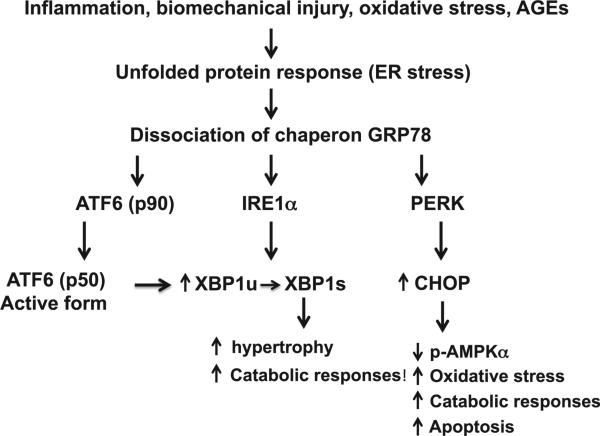Fig. 2.
The UPR in articular chondrocytes in OA. ER stress in OA chondrocytes caused by certain inflammatory mediators, biomechanical injury, nitric oxide and AGEs leads to activation of the UPR signaling cascades triggered by dissociation of the chaperon GRP78 from the ER transmembrane proteins PERK, IRE1α, and ATF6. The active XBP1 spliced form (XBP1s), generated by IRE1a through alternatively splicing mRNA of unspliced XBP1 (XBP1u), promotes chondrocyte hypertrophy and increases catabolic responses. The cleaved active form of ATF6 (p50) can induce XBP1 expression through direct binding to XBP1 promoter. Increased CHOP expression potentiates IL-1β to decrease phosphorylation of AMPKα and induce catabolic responses, superoxide generation and apoptosis.

